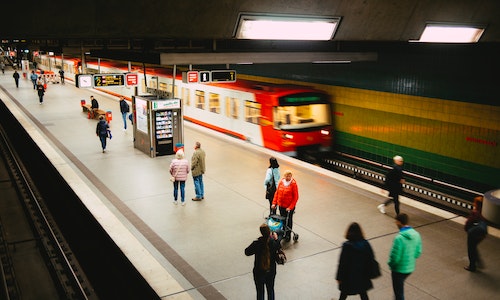What will the eventual fate of public vehicle seem to be? The significant ventures being arranged today, for example, the UK’s HS2 fast rail organization, aren’t essentially unique to what’s been worked throughout the course of recent years. Maglev trains are to a great extent bound to specialty projects in China. Hyperloop stays a doubtful gleam in Elon Musk and Richard Branson’s eyes. Any semblance of HS2 can convey significant upgrades in network limit however through gradual changes in customary plans, from tracks to prepare intruders. However while the rail area is watchfully delayed at acquainting new advances due with the lengthy timespan it takes to plan and construct new lines and vehicles, there are various specialized developments being developed that, whenever embraced, could make the trains of tomorrow both quicker and more secure.
1. Mechatronic Switches
Switch or focuses disappointment is answerable for almost 20% of the absolute postponement experienced by travelers on UK railroads. This happens when there’s an issue with the system that empowers trains to move starting with one track then onto the next at an intersection. Regardless of the recurrence of the issue, the innovation utilized in these components has scarcely changed starting from the principal plan almost a long time back. In any case, a cooperative exploration project has investigated extremist elective advances. For instance, one imaginative plan called Repoint has three free engines that can lift and move the rails, depending on gravity to secure them once again into the right spot and giving overt repetitiveness on the off chance that a couple of the engines fall flat. This differentiations with existing switches that slide the rails sideways and can get stuck halfway, so have exorbitant extra layers of sensors and conventions to alleviate the gamble. The future “mechatronic” changes mean to work quicker, further develop simplicity of upkeep and lessen the gamble of disappointment through their reinforcement engines.
2. Active Suspension
Ordinary suspension frameworks confine a train’s speed as it goes on bended track, restricting the number of trains you that can run on a course. These suspension frameworks basically work like enormous springs, consequently changing the distance between the haggles carriage as the train heads out over lopsided ground to cause the ride to feel smoother. Dynamic suspension frameworks are currently being created which present new sensors, actuators and regulators to all the more definitively modify the distance among haggles. This offers further developed ride solace and empowers the train to go round bends with more prominent speed and dependability. This can be joined with frameworks to effectively shift the train as it adjusts the corner, offering expanded benefits.
3. Actively Steering
In a traditional wheelset, the two wheels are interlocked and associated with a decent hub, forestalling any general revolution between them. At the point when a train enters a bend or a dissimilar course at an intersection, it should dial back to guarantee the wheels are directed over the track and to forestall undesirable vibration of the wheels. Rail line scientists are presently growing freely pivoting wheels to incorporate a different incitation system that can help steer the wheelsets on the bended course.
4. Active Pantograph
Fast electric trains need to keep in touch with the above powerlines by means of the pantograph that sits on top of the vehicle. On the UK mainline, pantograph level ordinarily changes by around 2m to get the association in various regions like in burrows, level intersections and extensions. Scientists are beginning to foster dynamic pantographs that have their level and the prompted vibration associated with power move constrained by an actuator. These dynamic pantographs can further develop the contact force and take out contact misfortune issues because of quick changes in the above line level and other natural aggravations (like breeze).
5. Virtual Coupling
The quantity of trains that can run on a course (thus the limit of the line) depends to some extent on the flagging framework. Most rail routes utilize a fixed-block framework, what separates the tracks into segments. Just a single train at an at once in each part so there must be a huge hole between the trains. Be that as it may, a few rail lines are presently beginning to utilize a moving-block flagging framework, which decides the essential hole between trains in view of the distance it takes for them to grind to a halt in a crisis. Be that as it may, this hole could be diminished further on the off chance that it depends on constant data about what the train in front is doing and where it will stop assuming it raises a ruckus around town.
This is known as “virtual coupling” and includes the two trains conveying data about their changing velocity and brake movement so they can diminish or build the hole between them to the base important. With more limited holes between them, more trains could run securely on a course, expanding in general organization limit. With such developments, we could acquaint trains that are capable with adjust to the changing qualities of the line to keep up with high paces all through the greater part of the excursion and stay away from those irritating stop-start times of movement. Extending and disturbing the limits of current railroad plans in this manner would empower us to make a cutting edge network with a stage change in execution that is good for the 21st 100 years – with next to no requirement for costly suspending trains or vaccum tubes.
